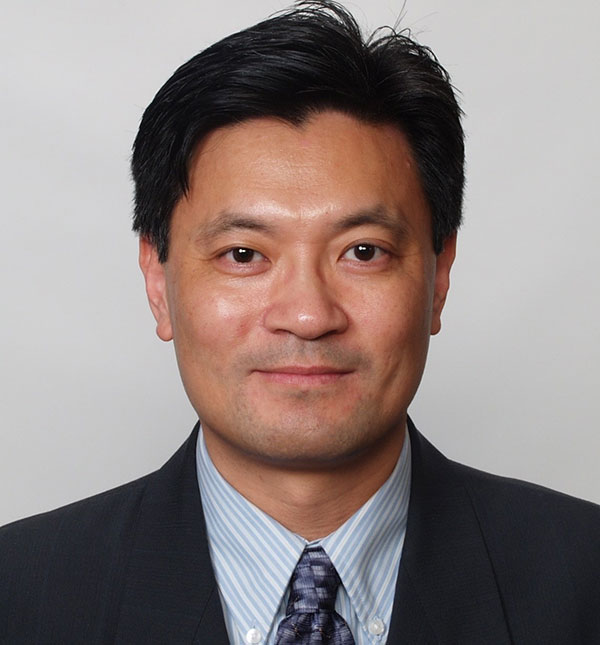General Atomics Researcher Named Fellow of the American Physical Society
Houyang Guo recognized for pioneering contributions to the understanding of fusion plasmas

San Diego, October 7 – General Atomics (GA) researcher Dr. Houyang Guo has been selected as a Fellow of the American Physical Society (APS) for his contributions to the advancement of science and development of fusion energy. Guo is the Director of Boundary and Plasma Material Interaction Center at the DIII-D National Fusion Facility. The Fellowship was conferred on him upon the recommendation of the APS Division of Plasma Physics.
The APS citation reads: “For pioneering contributions to tokamak and alternative magnetic confinement approaches toward the development of fusion energy, including discoveries of relaxed high-beta plasma states, the role of fast particles on stability and confinement, and for innovative solutions to power exhaust for fusion reactors.”
Dr. Guo has made seminal contributions to the science and development of fusion energy, from the advanced tokamak approach to alternative fusion concepts. His work has contributed substantially to the understanding and control of the plasma boundary for steady-state tokamak operation. He recently developed an advanced concept for improving heat and particle exhaust on DIII-D, which is an essential technology for fusion reactors. Dr. Guo also identified the important effects of fast particles in the tokamak operating mode that was used to achieve record fusion performance on the Joint European Torus (JET) in 1997. The loss of fast particles during operation is a key issue for ITER and future reactors.
Dr. Guo also demonstrated the stabilizing effect of fast particles in simple magnetic field geometries with extremely high beta (the ratio of plasma to magnetic pressure, an important measure of economic merit) for compact fusion reactors. His research has pioneered natural relaxation in these very high beta plasmas, which has motivated increased interest in basic plasma physics research beyond fusion. Throughout his career, he has made key contributions to tokamak research on the largest operating magnetic confinement projects on three continents – JET, EAST and DIII-D – as well as to major alternative fusion concept research programs at the University of Washington and at TAE Technologies.
“Becoming an APS Fellow recognizes Houyang’s excellent technical contributions and his community service and leadership both in the U.S. and internationally,” noted GA Magnetic Fusion Energy Vice President Tony Taylor. “This is a well-deserved honor.”
The APS Fellowship Program was created to recognize society members who have made advances in physics through original research and publication or significant innovative contributions in the application of physics to science and technology. Election as an APS Fellow is a distinct honor signifying recognition by one's professional peers. Each year, no more than one half of one percent of the Society membership is recognized by election.
DIII-D is the largest magnetic fusion research facility in the U.S. and is operated as a national user facility by General Atomics for the U.S. Department of Energy’s Office of Science. Researchers come to DIII-D from across the globe to investigate a wide range of topics from fundamental plasma science to how future fusion power plants will work.
About General Atomics: Since the dawn of the atomic age, General Atomics innovations have advanced the state of the art across the full spectrum of science and technology – from nuclear energy and defense to medicine and high-performance computing. Behind a talented global team of scientists, engineers, and professionals, GA’s unique experience and capabilities continue to deliver safe, sustainable, economical and innovative solutions to meet growing global demands.
About the DIII-D National Fusion Facility. DIII-D is the largest magnetic fusion research facility in the U.S. and has been the site of numerous pioneering contributions to the development of fusion energy science. DIII-D continues the drive toward practical fusion energy with critical research conducted in collaboration with more than 600 scientists representing over 100 institutions worldwide. For more information, visit www.ga.com/diii-d.
For more information contact:
Zabrina Johal
858-455-4004
Zabrina.Johal@ga.com